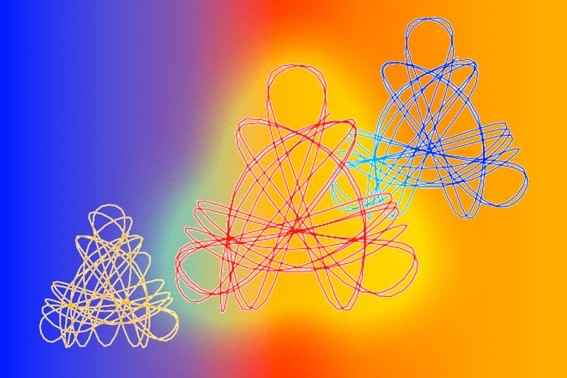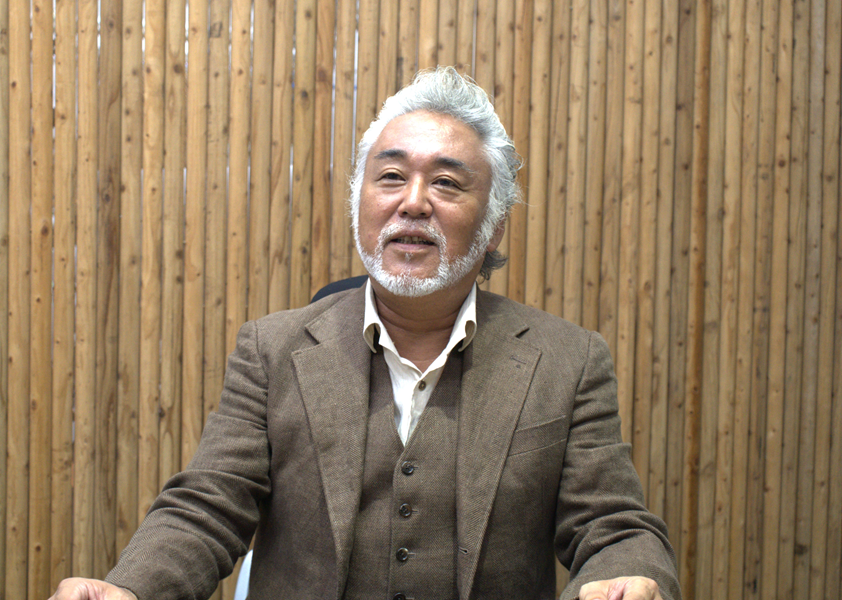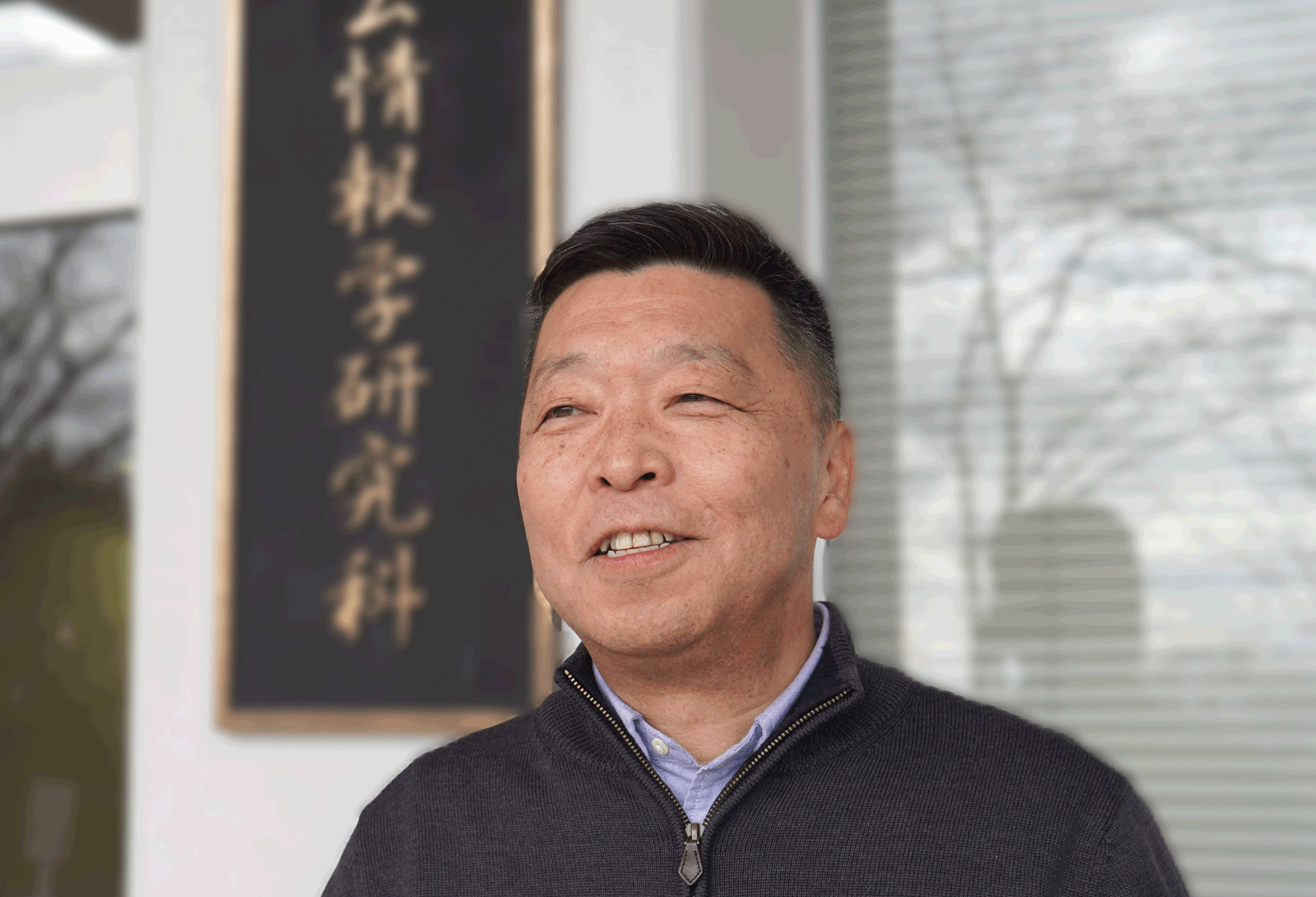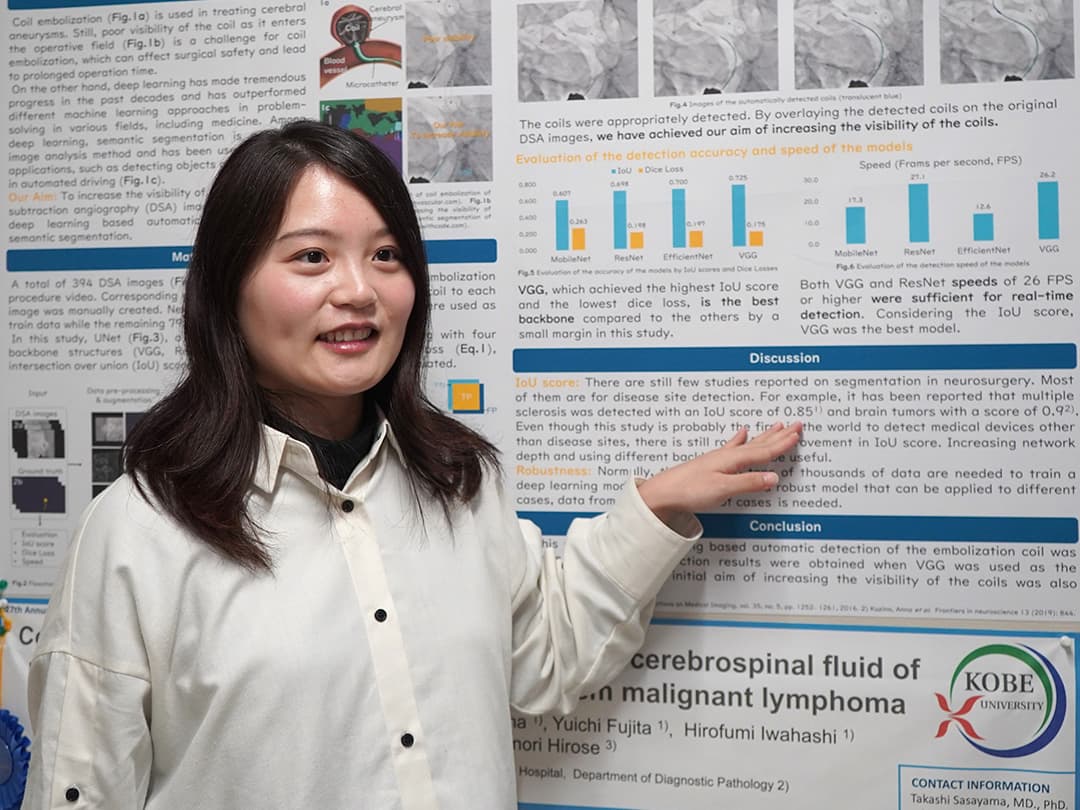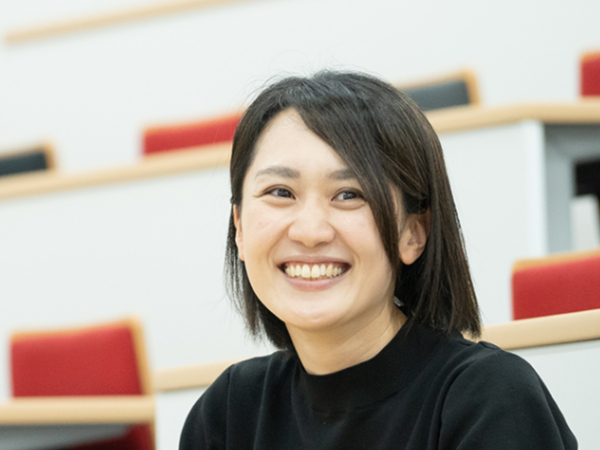A research group led by Associate Professor YAGUCHI Takaharu (Graduate School of System Informatics) and Associate Professor MATSUBARA Takashi (Graduate School of Engineering Science, Osaka University) have succeeded in developing technology to simulate phenomena for which the detailed mechanism or formula are unexplained. They did this by using artificial intelligence (AI) to create a model, which is faithful to the laws of physics, from observational data.
It is hoped that this development will make it possible to predict phenomena that have been difficult to simulate up until now because their detailed underlying mechanisms were unknown. It is also expected to increase the speed of the simulations themselves.
These research achievements were presented on December 7 at the Thirty-fourth Conference on Neural Information Processing Systems (NeurIPS 2020), a prestigious meeting on artificial intelligence technology-related topics. 9454 papers were posted to NeurIPS 2020 and of the 1900 that were selected, this research paper was in the top 1.1% and was one of only 105 selected for oral presentation at the conference.
Main points
- Being able to apply artificial intelligence to the prediction of physical phenomena could result in extremely precise, high-speed simulations.
- Prediction methods up until now have been prone to generating overestimated or underestimated results because the difficulty of digitizing phenomena means that the laws of physics (such as the energy conservation law) are not preserved.
- This research group developed AI-based technology that can run simulations while preserving the laws of physics. They used digital analysis to replicate physics that the computer can recognize in the digital world.
- It is expected that this technology will enable phenomena for which the detailed mechanism or formula is unclear (e.g. wave motion, fracture mechanics (such as crack growth) and the growth of crystal structures) to be simulated as long as there is sufficient observational data.
Research Background
Ordinarily, it is possible to carry out predictions of physical phenomena via simulations using supercomputers, and these simulations use equations based on the laws of physics. Even though these equations are highly versatile, this does not always mean that they are capable of perfectly replicating the distinct characteristics of individual phenomena. For example, many people learn about the physics behind the motion of a pendulum in high school. However, if you were to actually make a pendulum and try swinging it, a slight manufacturing defect in the pendulum could cause it not to move in accordance with the theory and this would result in an error in the simulation’s prediction. Consequently, research into applying observational data of phenomena to simulations via artificial intelligence has been advancing in recent years. If this can be fully realized, it will be possible to develop custom simulations of real phenomena, which should improve the accuracy of simulations’ predictions.
However, it is difficult to introduce the laws of physics that govern real world phenomena to prediction technology using current AI because computers are digital. It has been hard to perfectly replicate physical laws such as the energy conservation law. Consequently, unnatural increases or decreases in energy may occur in long-term predictions. This can cause phenomena such as the object speed or wave height to be overestimated or underestimated, and results in uncertainty regarding the prediction’s reliability.
Research Findings
This research group developed a new artificial intelligence-based technology that can be utilized to predict various phenomena by strictly preserving physical laws such as the energy conservation law.
This newly developed approach was born from the notion ‘if the world were digital’. Based on this way of thinking, physical laws that must be preserved in such a digital world were introduced. Focusing on the fact that physical laws are written in calculus terms such as ‘differentiation’ and ‘integration’, the researchers rewrote them using digital calculus.
To do this technically, the researchers developed a new digital version of backpropagation *1, which is utilized in machine learning, using automatic differentiation. It is possible to preserve physical laws such as the energy conservation law in the digital world with this new approach. Furthermore, this enables the energy conservation law to be correctly realized by AI-based technology even in simulations. Using this new methodology will make highly reliable predications possible and prevent the occurrence of unnatural increases and decreases in energy that are seen in conventional models.
In the technique developed in this study, the AI learns the energy function from observational data of the physical phenomena and then generates equations of motion in the digital world. These equations of motion can be utilized as-is by the simulation program, and it is expected that the application of such equations will result in new scientific discoveries (Figure 1). In addition, it is not necessary for these equations of motion to be rewritten for the computer simulation, so physical laws such as the energy conservation law can be replicated.
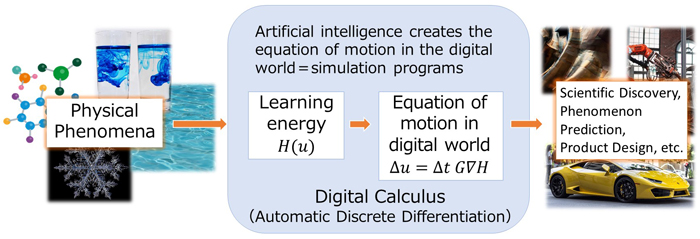
To introduce physical laws into the digital world, geometric approaches such as those of symplectic geometry *2 and Riemannian geometry *3 were also utilized. This makes it possible to apply this technique to the prediction of a wider range of phenomena. For example, the phenomenon of two droplets becoming one can be explained in terms of the loss of energy that occurs when they become a single droplet. This kind of phenomenon can be described well using Riemannian geometry. In fact, both energy conservation and energy dissipation phenomena can be shown in a similar equation from a geometrical aspect, which could enable the creation of a unified system that can handle both types of phenomenon. By incorporating this way of thinking, the model developed through this research was expanded to handle energy dissipation phenomena as well, making it possible to accurately estimate the reduction in energy.
Examples of such phenomena include the structural organization of materials, crystal growth and crack extension mechanics, and it is hoped that further developments in AI technology will enable these kinds of phenomena to be predicted.
Moreover, the research group also successfully increased the efficiency of the AI’s learning and experiments showed that this was 10 times faster than current methods.

On the left side is the correct data, which was the machine learning target, and on the right is the prediction made using artificial intelligence. The AI prediction results were confirmed to be very close to the target data.
Further Research
The approach developed by this research suggests that it would be possible, when predicting physical phenomena, to produce custom simulations that imitate detailed aspects of these phenomena that are difficult for humans to coordinate. This would make it possible to increase the accuracy of the simulation while also making more efficient predictions possible, leading to improvements in calculation time for various physics simulations.
Furthermore, using AI to extract physical laws from observational data will make it possible to predict phenomena that were previously difficult to simulate due to their detailed mechanisms being unknown.
Predictions made by AI have often been termed ‘black boxes’ and they are prone to reliability issues. However, the approach developed through this research is highly reliable because it can accurately replicate phenomena while adhering to physical laws such as the energy conversion law, meaning that over predictions and under predictions are unlikely to occur.
This technique can also develop backpropagation, which is commonly utilized in AI learning. Therefore, it could improve the speed of various types of machine learning beyond the technology in this research study.
Glossary
- *1 Backpropagation (BP)
- Backpropagation is an algorithm used in machine learning. It is used to calculate how best to correct incorrect responses given by the AI during the learning period (based on differentiation calculations).
- *2 Symplectic geometry
- The geometry behind mechanical theories such as Newton’s Laws. It is considered to be able to describe physical laws such as mechanics without coordinates as the laws exist regardless of specific coordinates. Therefore, it is possible to describe and analyze equations of motion using symplectic geometry.
- *3 Riemannian geometry
- Riemannian geometry is used to study curved surfaces. It enables the concepts of length and angle to be introduced to a variety of subjects. By using this geometric approach, phenomena such as the dissipation of energy can be modelled in terms of a point moving down a slope.
Acknowledgements
This research received funding from the following:
- The Japan Science and Technology Agency (JST)’s CREST (Core Research for Evolutional Science and Technology) funding program for team research.
Research Area: “Creating information utilization platform by integrating mathematical and information sciences, and development to society” (Research Supervisor: UEDA Naonori).
Research Project Title: “Structure Preserving System Modeling and Simulation Basis Based on Geometric Discrete Mechanics” (Grant Number JPMJCR1914) (Research Director: Yaguchi Takaharu). - JST PRESTO funding program for individual research.
Research Area: “Collaborative Mathematics for Real World Issues” (Research Supervisor: KOKUBU Hiroshi)
Research Project Title: “Integrated research of information geometry and discrete mechanics and its applications to analysis of networks in social sciences” (Grant Number JPMJPR16EC) (Research Director: Yaguchi Takaharu) - JSPS KAKENHI Grant
Research Project: “Uncertainty in Deep Learning for Understanding Data Mechanism and Anomaly Detection” (Principle Investigator: Matsubara Takashi) (Grant Number 19K20344). - JSPS KAKENHI Grant
Research Project: Energy conservation law extraction methods for Black Box differential equation models and their application to network analysis (Grant Number 20K11693) (Principle Investigator: Yaguchi Takaharu)
Journal Information
- Title
- “Deep Energy-based Modeling of Discrete-Time Physics”
- Authors
- Matsubara Takashi1、Ishihara Ai2、Yaguchi Takaharu2
- Graduate School of Engineering Science, Osaka University.
- Graduate School of System Informatics, Kobe University.
- Journal
- Advances in Neural Information Processing Systems 33 (NeurIPS 2020)





